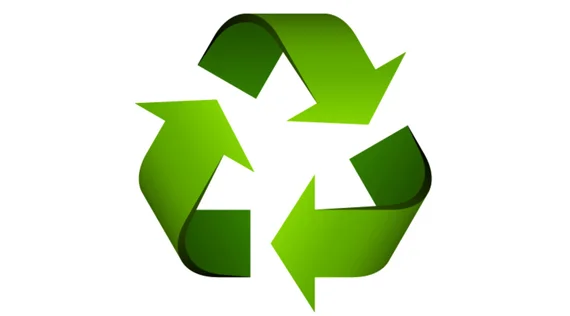
SEATTLE (Waste 360): The Indiana Recycling Coalition (IRC) announced its launch of the Indianapolis Circular Economy Initiative (ICEI), a multi-stakeholder, multiyear collaborative effort – in partnership with the City of Indianapolis and many other stakeholders – to address Indianapolis’ recycling challenges and achieve the Thrive Indianapolis Plan goals for waste and recycling.
Backed by extensive research that began in early 2019, the Circular Economy Initiative seeks to generate good and promising jobs; foster innovation, ideas, and investments; and capture the economic, social, and environmental benefits of a thriving circular economy in Indiana.
The launch coincides with the advancement of ICEI’s first major policy initiative: charge the Indianapolis City-County Council with the creation of a solid waste management district for Marion County.
During a meeting of the Indianapolis City-County Council’s Commission on Environmental Sustainability, Daniel Parker, Director of Public Works for the City of Indianapolis, and Allyson Mitchell, Executive Director of the Indiana Recycling Coalition, presented about the current state of waste and recycling in Indianapolis. Parker outlined the revenue shortfall and explained how his department has managed staff and fleet limitations while relying on supplements from the city’s general fund to stay operational for several years.
“The Department of Public Works: Solid Waste Division provides essential services to Indianapolis and Marion County every day,” Parker stated. “Historic funding challenges have created obstacles not only in providing these key services, but also in adoption of new diversion methods, such as curbside recycling or composting. Over the next five years, our department and key stakeholders will undertake a collaborative effort to reimagine how the City approaches solid waste management. We value the collaboration and creative problem-solving that comes from our partnership with the Indiana Recycling Coalition and its Indianapolis Circular Economy Initiative.”
Following Parker’s presentation, Mitchell, who is a member of the Commission, explained the formation of the initiative, the organizations involved, and its dual approach of providing public education and seeking local policy changes to help the City achieve its goals through research, planning, stakeholder collaboration, job creation and infrastructure investments.
Mitchell then pointed to the financial and operational unsustainability of Indianapolis’ current approach to advance the recommendation that Marion County create a solid waste management district.
“For Indianapolis to be successful in achieving its own waste and recycling goals, it must create new structures for efficiently managing services, generating revenue, and providing consistent education to its residents,” Mitchell stated. “The lack of a solid waste management district in Marion County has held Indianapolis back from creating jobs and cleaning up its reputation – and our local environment – for far too long.”
With a recycling rate of just 7%, Indianapolis has been dubbed the most wasteful city in the US, falling far behind other Midwest US cities including St. Louis (10%), Cincinnati (17.9%), and Nashville (25%) and significantly behind the recycling rate for the state of Indiana (20%) and the national average of 35.2%. Many factors contribute to Indianapolis’ poor recycling rate, several of which originate from decisions made decades ago.
For example, when the 1990 law establishing solid waste management districts in Indiana was created, Marion County chose to not create one. This quasi-governmental entity, which exists in virtually all other Indiana counties, is empowered to create a solid waste management plan for the county, manage solid waste service contracts, impose fees on final disposal of solid waste within the district, operate solid waste management facilities for the district, and educate its residents on proper solid waste disposal, among other roles.
Also, during the late 1980’s, Indianapolis invested in the construction of a waste-to-energy incinerator and established a solid waste user fee for Indianapolis households of $32 per year to pay for residential trash removal services. This fee has not been raised in over 30 years, despite increasing cost to deliver services.
In Thrive Indianapolis, its first ever sustainability plan, the City has committed to several goals for improving how it manages waste. Primarily, the Thrive Plan established a goal of increasing the community wide waste diversion rate by 40% by 2030 by providing universal residential curbside recycling and offering subscription curbside composting to all Indianapolis residents by 2025.
Currently, Indianapolis residents do not automatically receive curbside recycling service. Residents who want to recycle must either take their recyclables to one of the City’s 16 public drop off locations, or opt-in to a semi-monthly curbside program and pay approximately $100 per year. Approximately 10% of Indianapolis’ 267,000 households subscribe to this curbside program.
“Indianapolis residents understand the impact that sustainable practices can have on both our community and the planet,” said Indianapolis Mayor Joe Hogsett. “Extensive community feedback has shaped Thrive Indianapolis’ planning and initiatives—including universal curbside recycling for all Indianapolis homes by 2025. Based on Indiana Recycling Coalition’s demonstrated leadership, I am confident that our city can take advantage of these waste management opportunities.”
Courtesy: www.waste360.com
| Copper Scrap View All | |
| Alternator | 0.32 (0) |
| #1 Copper Bare Bright | 3.76 (-0.01) |
| Aluminum Scrap View All | |
| 356 Aluminum Wheels (Clean) | 0.73 (0) |
| 6061 Extrusions | 0.64 (0) |
| Steel Scrap View All | |
| #1 Bundle | 460.00 (-15) |
| #1 Busheling | 480.00 (-15) |
| Electronics Scrap View All | |